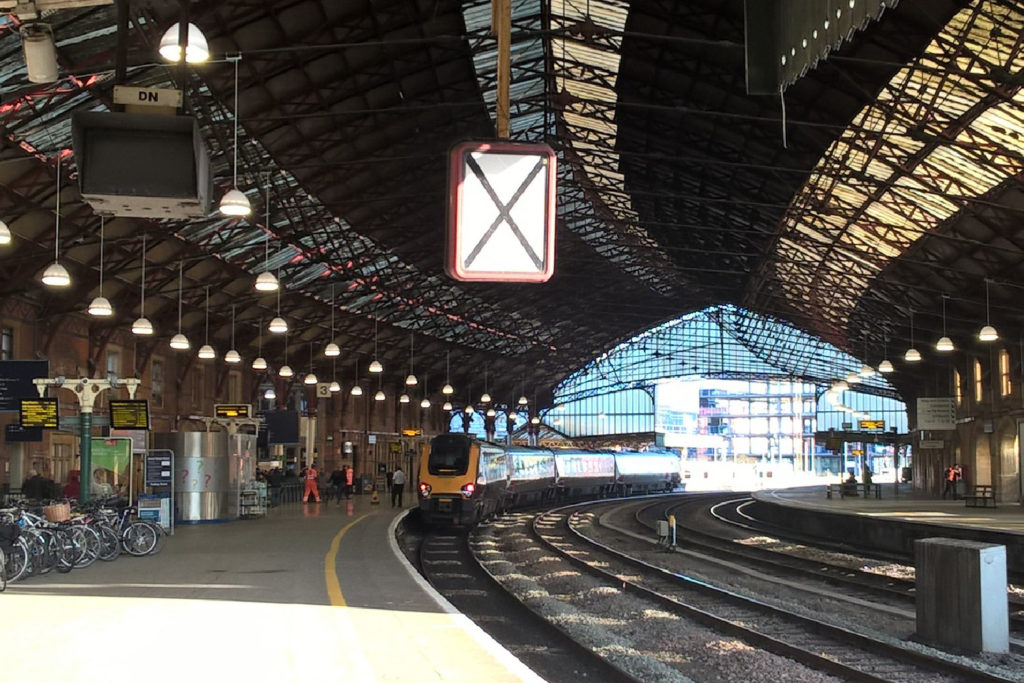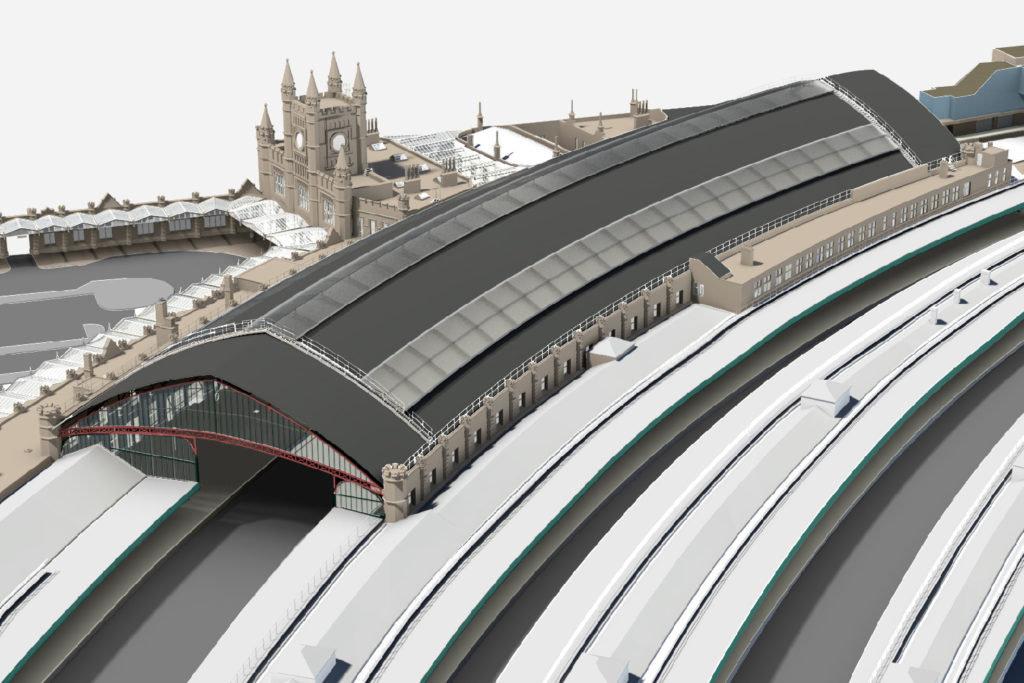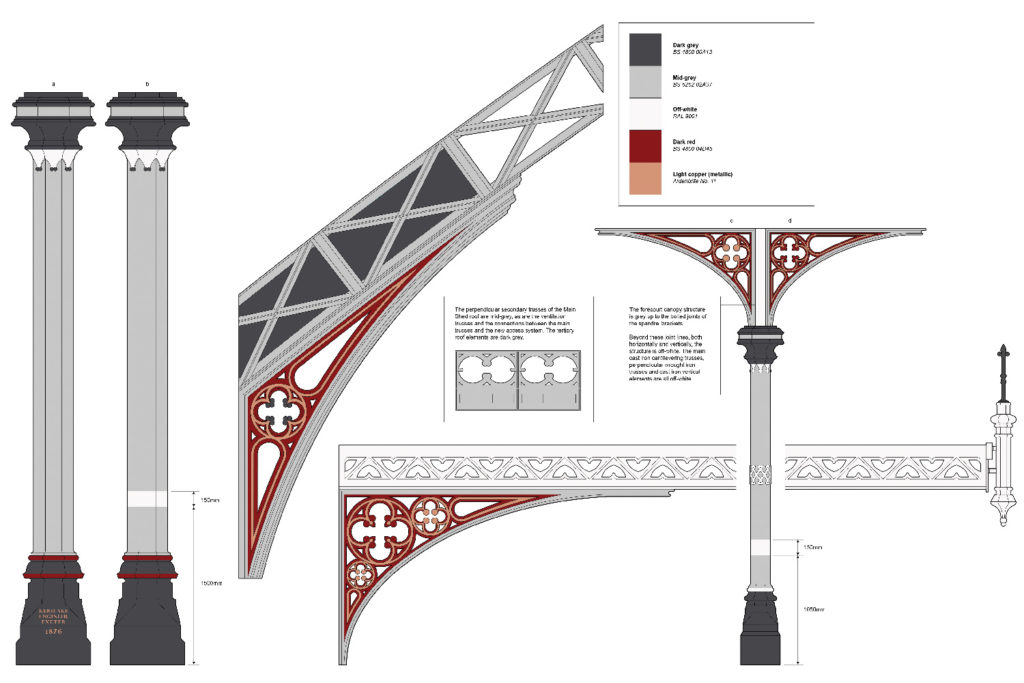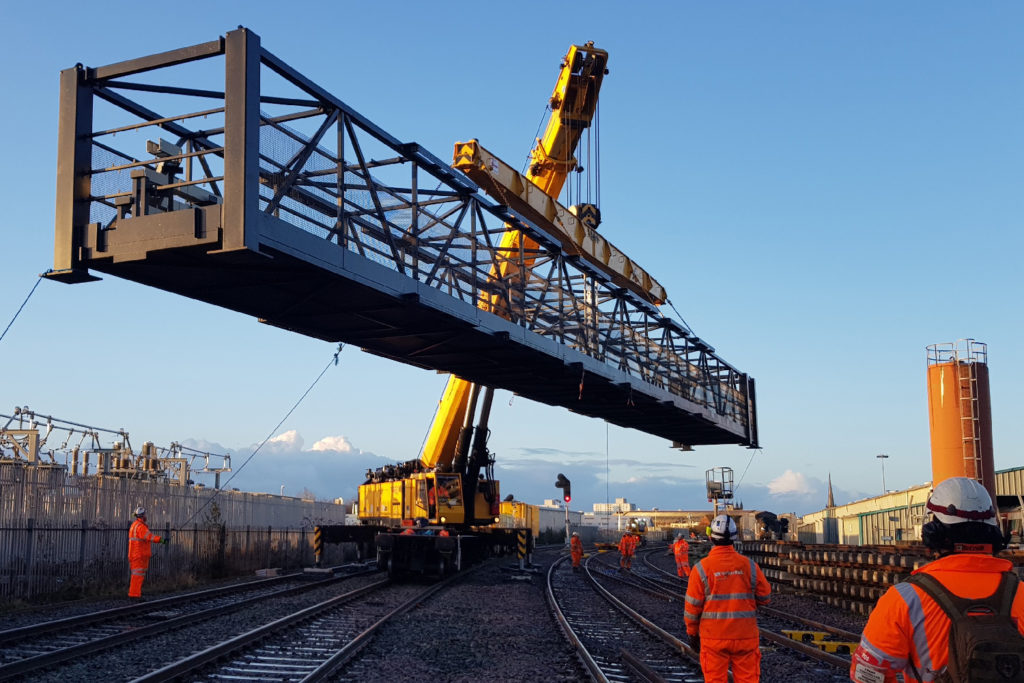Over Christmas, a substantial amount of work was delivered in and around Bristol’s Temple Meads station. This included important elements of the long-term Bristol Rail Regeneration programme, which is itself linked into Bristol City Council’s Temple Quarter Regeneration.
As part of its wider regeneration programme, Bristol City Council is developing a sustainable urban quarter – Temple Quarter – as a place to live, work, study, enjoy leisure time and build on Bristol’s strengths as a world class city. Marvin Rees, Mayor of Bristol, commented: “With Temple Meads station, the largest transport interchange in the region, at the core of Temple Quarter, the City’s regeneration of the wider area alongside the station is a once-in-a-generation opportunity. It will bring about the long-awaited transformation of a key site in the heart of the city, creating 22,000 new jobs and around 10,000 new homes in proximity to significant areas of deprivation, and an economic boost of £1.6 billion per annum.”
The station is an important hub in the city’s transport network, especially for pedestrians and cyclists. Making improvements to Temple Meads station will feed into Bristol’s ambitions for cleaner air and carbon neutrality.

Bristol Rail Regeneration Programme
Over the next 2½ years, Temple Meads station will undergo a major transformation that will enhance customers’ experience of using the station as well as provide operational capacity improvements that will permit increases in train services and improved reliability.
The most obvious improvement will be the refurbishment of the 38-metre span Grade 1 listed roof, built in 1871-4. This will involve extensive repairs to the metal structure and timber panelling and the complete re-glazing of the roof and platform canopies. The existing glazing is discoloured and dirty, restricting light access, leaving the platforms beneath with reduced natural light. This will be the first major refurbishment of the station roof in over 25 years and is due for completion in 2023.
Equally important, although less obvious to customers, is the remodelling of the crucial Bristol East Junction, between the four Filton Bank lines (leading to south Wales, Bristol Parkway and the Midlands) and the main lines (leading on to Bath Spa and London Paddington).
The junction is located just to the east of Temple Meads station and is mainly surrounded by industrial units and rail depots. When complete, the new junction will improve capacity, flexibility and reliability, making more efficient use of platforms at the station and reducing delays for passengers. An extra line is also being introduced, to support additional suburban services being planned for the future as part of the MetroWest Project.
The programme of improvements to the station will also include the complete rewiring of the station’s electrical system, to bring it up to modern standards. The work will improve the stability of the power supply at the station and allow for future expansion. Heating, ventilation and mechanical cooling will also be renewed and all lighting will be upgraded to energy efficient LEDs, designed by FJD Consulting.
Alongside the rewire, separate projects are being planned to bring a Wi-Fi network to the station, as well as enhanced passenger information through new customer information screens, improved public announcement systems and CCTV.
Finally, Network Rail, in collaboration with West of England Combined Authority, will create a new eastern station entrance that will provide direct access into a new University of Bristol campus on the old Post Office site, beside platforms 13/15, as well as to the wider east side of the city. The existing subway will be extended eastwards. Plans are in development, but the aspiration is to break through during this summer’s blockade, with a small ticket hall to be constructed later and completed in time for the opening of the campus in autumn 2023.
At an event to mark the 180th anniversary of the original Temple Meads station, Mike Gallop, Network Rail’s Western route director, talked about the Bristol Rail Regeneration programme, saying: “This is a great moment for Bristol and the whole West of England as we will be providing a brighter station for passengers, worthy of the original creator, Isambard Kingdom Brunel. Around 10 million passengers pass through the station each year. Once complete, our renovations in and around the station will bring a brighter welcome to the city, improving passenger experience and preserving our station for future generations.”
The original station at Bristol Temple Meads was opened as a terminus in 1840. This was significantly enlarged with the construction of the new ‘Joint station’ (GWR, Midland and Bristol & Exeter railway companies) in 1871-4. The station was further expanded to the East in the 1930s with additional platforms and a new passenger subway. The old station buildings were closed to rail traffic in 1965 and are now used as a carpark, corporate events space, retail and various business units.
Roof works
The £24 million refurbishment project will see Network Rail’s contractor, Taziker, repair and refurbish the 38-metre span, 153-metre-long trainshed roof, as well as further work on roofing over Bonaparte’s Alley and to the canopies on the platforms and in the forecourt. The works include restoring the original features, both within the main trainshed and on the canopy platforms. All works will be approved by Historic England. The two-year programme will involve extensive metal and woodwork repairs and the complete re-glazing of the roof and platform canopies.
A 5,800 square metre access scaffold structure has been designed by RDG Engineering, with foundations and back-propping by FJD Consulting. Temple Meads station lies between two watercourses and there are challenging geotechnical conditions beneath the platforms, as well as a network of historic structures, cellars and other voids. To support the vast structure, each tower base’s foundation has been designed individually. Some locations have needed voids injection grouted, others require spreader structures.
Between Christmas Day and 11th January platforms 1-6 were closed to allow some towers to be erected by Network Scaffolding, Taziker’s scaffolding provider. These, and the decking above, will be completed with minimum disruption to passengers by working closely with GWR and other train operators, with COVID-19 service levels affording more opportunities for track access.
Taziker, will remove the existing glazing and grit blast the 130-year-old wrought and cast-iron structure. Network Rail’s designer, FJD Consulting, has prepared a suite of standard sympathetic repair solutions, agreed with Historic England. The preparatory design works were informed by previous periodic structural examinations and rope access inspections of the gable ends in 2018, as well as by the LiDAR survey. Any non-standard works needed will be designed as the works proceed and then agreed with Historic England’s representative, as will dealing with any unusual or unexpected historic feature than may be uncovered during the project.
To assist Network Rail’s asset management and conservation plans for the station, a 3D BIM survey was undertaken, based on 3D LiDAR scanning technology – the only viable solution to collect the vast amounts of data required of the complex and high access risk station buildings, tunnels, vaults, platforms, plant rooms and trainshed roofs. The BIM model will be used to record the condition, repairs and testing data for each element.

Timber cladding sections will be removed, refurbished and reused in order to maintain as much historic material as possible. New timber will be minimised.
The new glazing will be laminated glass in the train shed and Georgian wired effect GRP in the platform canopies and the trainshed gable ends.
The completed works will be painted in a heritage-based colour scheme.
The contract is good news for the Bristol economy, with a large workforce on site. Taziker has also committed to creating apprenticeships for local people; offering opportunities to work alongside their heritage project experienced teams.

Bristol East Junction
The renewal and improvement of the 50 point-ends at Bristol East junction began in March 2020 and will be completed during an eight-week blockade in July to September 2021. The design of the new layout was by AECOM.
During a possession over Christmas Day that lasted until 28 December, the South Rail Systems Alliance (Network Rail/Colas Rail/AECOM) replaced five point ends in the Up and Down London lines and the Down Filton Main.
The new components were delivered loose to Network Rail’s Kingsland Road Depot and there built up into panels.
The 1,200 tonnes of old ballast, rails and sleepers were removed by road-rail excavators and loaded onto engineering trains for offsite recycling. New ballast was brought to site in engineering trains – 600 tonnes of bottom ballast and 600 tonnes of top.
The new panels were transported and placed using a combination of a Kirow crane and Geismar PEM-LEM sets. Following the electrical works to switch heating and signalling works, two double-shifted tampers completed the trackwork and ensured an on time handback at line speed.
The main blockade will see the replacement of remaining S&C to the new layout.
This work on strategic routes was time critical. A project contingency plan and an operational contingency plan were both in place to manage potential problems. Contingencies were made for plant and other problems with the onsite availability of a spare Kirow crane at the station, onsite fitters, spare plant, overlaps in working shifts, and the project operations manager on site.
To avoid a potential twelve-week summer blockade, many advance works have already been carried out, with four weekends of plain line and S&C renewal early in 2020. Other preparatory works included relocating signals and improving driver walkways. A substation and a relay room were demolished and replaced to accommodate foundations for a new gantry.
The Filton four-tracking project, completed in 2018, was an important enabler. It will not only allow the junction remodelling to achieve its full potential but will also reduce disruption to the travelling public, with two out of the four lines being kept open for a significant proportion of the blockade.
A new five track span signal gantry was required beside Dings Park, to permit the summer’s installation of additional trackwork. This was built to electrification clearances in anticipation of the deferred completion of the electrification between Parkway and Temple Meads stations.

The gantry was delivered by AmcoGiffen, designed by FJD Consulting, and was fabricated and installed by Loughborough-based Adey Steel. The two towers were erected in rules of the route possessions during the autumn. The 20-tonne, 33.6 metre gantry span was delivered by road to Network Rail’s Queen Anne Road Depot in three sections and built up beside the Filton Down Main during the week before Christmas.
During the Christmas possession, a Kirow crane lifted the gantry span and placed it onto two rail trailers that were then towed by a road/rail excavator to the site, where the Kirow lifted it into place. The new gantry will remain beside the existing structure until the latter stages of the summer blockade, when signalling will be transferred to it and the old gantry demolished.

